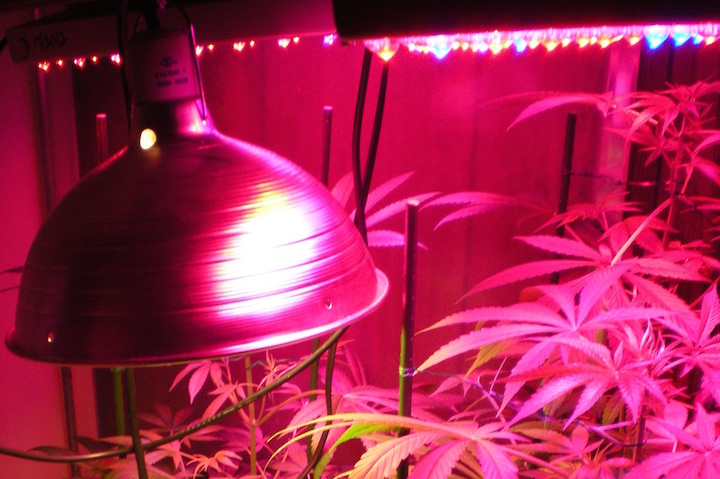
The Best Marijuana Grow Light
There are a few key components that are absolutely essential in a well-functioning indoor garden. Ventilation, nutrition, and growing medium are all important but no component is as influential as the lighting system. Choosing the best marijuana grow light makes all the difference in the quality of your harvest.
All of the energy provided for plant growth stems from the horticultural lighting system. A few years back, the only lighting systems used by serious medical marijuana growers were high-intensity discharge lighting (HID), including metal halides (MH) and high pressure sodiums (HPS). Although many grower still rely on these lighting systems, there has been an influx of new technologies which have found places within the indoor gardening industry. A closer look at the available technologies and how to determine the light energy needed for a garden space will help you make the most out of a very important component of your grow.
HID Lighting (MH and HPS)
The most commonly used lighting system for growing medical marijuana is the HID (High Intensity Discharge) lighting system. HID lighting systems include both MH (Metal Halide) and HPS (High Pressure Sodium). The reason these lighting systems are so popular is because of the intensity at which they disperse light energy. Gardeners hoping to grow monster plants generally prefer HID lighting because of its ability to penetrate deeper into the plant canopy.
When setting up a HID lighting system, a grower should calculate the coverage at about 40 watts per square foot. In other words, a 1000 watt HID light will cover 25 square feet of garden space. Please remember that when we are talking about garden space, we are referring to the actual plant canopy and not the physical size of the room. Some medical marijuana growers like to push the limits and will set up their lighting systems at 60+ watts per square foot.
Read more HID Lighting on the Grasscity Forums
LED (Light Emitting Diodes)
Another popular choice for medical marijuana growers is an LED lighting system. These systems require less energy to cool and operate, making them a more energy efficient option. However, growers using LED lights should grow shorter-stature plants since the LEDs lack the punch to penetrate a plant canopy. Unfortunately, LED lighting systems vary greatly depending on manufacturer, wattage of individual bulbs, and the color spectrum of the system.
Due to the large variance in LED systems on the market, there is no “rule of thumb” to calculate wattage per square foot. A very general rule is to start with a footprint of 20-30 watts per square foot and adjust from there. A grower can also take the manufacturer’s suggested calculation into consideration but will generally be disappointed when growing medical marijuana at their specs. Marijuana doesn’t have the same light requirements as lettuce, and too often LED manufacturers fail to make this distinction when calculating the light system’s potential coverage area.
Sulfur Plasma
The most recent light technology to give HID lights a run for their money is the sulfur plasma horticultural light. Sulfur plasma lights utilize induction technology which makes them degrade very slowly and last a long time. The advantage is that your plants will be receiving the same amount of PAR (Photosynthetically Active Radiation) day after day, year after year. Sulfur plasma lights also provide a true full spectrum output, which is the closest to that of the sun, out of any artificial light technology. All in all, sulfur plasma could be the perfect fit for the indoor horticultural industry.
Calculating light coverage for sulfur plasma is similar to that of HID lighting systems. For growing medical marijuana, a grower should provide 30-40 watts per square foot of garden space. Some growers will push this up to 50-60 watts per square foot. Sulfur plasma has the ability to penetrate the plant canopy much like HID lighting, so larger plants can be grown without spindly flowers developing on the lower branches.
A grow room with the proper amount of light energy will pay for itself over and over again. Efficiently using a horticultural lighting system not only equates to larger, more productive yields, it also reduces the amount of labor required during harvesting (think how long it takes to trim all those underdeveloped, fluffy buds). Regardless of what lighting system you choose to use, make sure to calculate your light footprint so you can automatically maximize your garden’s return through efficiency.
Read more on Sulfer Plasma Lights on the Grasscity Forums